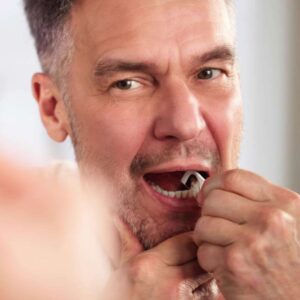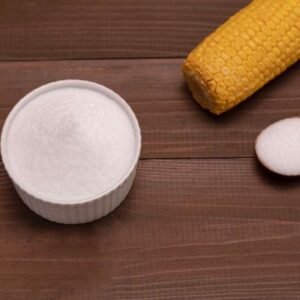
Unlock “Ageless” Skin with This Glow Up Secret
Let’s face it… everyone (women and men alike) wants to keep their skin looking youthful and radiant as they age.
However, this quest for the fountain of youth can feel like a losing battle as you juggle expensive creams, painful injections, and risky surgeries.
But what if I told you that the key to turning back the clock on your skin could be as simple as shining a light on it?
It sounds too good to be true, but cutting-edge research reveals that low-level laser therapy could be the game-changer we’ve been waiting for in the fight against wrinkles and sagging skin.
A study published in the Journal of Cosmetic Dermatology has skincare enthusiasts buzzing.
Researchers found that low-level laser therapy significantly improves skin elasticity and leads to fewer wrinkles… the hallmarks of youth.
If you’re lucky enough to have a dermatologist in your corner, it’s a fantastic option to discuss at your next appointment.
But here’s the really exciting part. You might not even need to leave your house to reap some of these benefits.
At-home LED (light-emitting diode) devices are becoming a hot trend in skincare, allowing you to bring the power of light therapy right to your own bedroom.
So, what’s the science behind this luminous miracle? Let’s break it down:
According to the Cleveland Clinic, red light therapy works its magic by:
- Boosting cellular energy
- Reducing inflammatory proteins (goodbye puffiness and redness!)
- Stimulating collagen production (hello, plump skin!)
- Increasing blood circulation
These powerful effects make red light a superstar for fighting signs of aging on your skin.
But that’s not all. Red-light therapy also shows promise for promoting faster wound healing and managing inflammatory skin conditions like rosacea, acne, psoriasis, and eczema.
I know what you’re probably thinking: “This sounds great, but how do I choose the right device?”
Don’t worry, I’ve got you covered. Following are a few practical tips for selecting your own at-home red light therapy device:
- Always choose an FDA-cleared device for safety.
- Check the light wavelength For skin benefits, 630-660 nm (nanometers) is ideal.
- Consider the area you want to treat. Larger panels cover more skin, while handheld devices are great for targeting specific problem areas.
- Pay attention to power output. Higher is generally better, but it’s also more expensive.
- Read user reviews to get real-world feedback.
- Choose a brand-name product with a good reputation, even if it costs a bit more.
Remember, consistency is vital with light therapy. Most devices recommend daily use for several weeks before seeing significant results.
Stick with it, and you might find yourself staring back at a face in the mirror that has that youthful glow you’ve been looking for.
P.S. Do you REALLY need All those skincare products? CLICK for the truth.
Source:
Shurrab, K., & Alzghayar, J. N. Low-level laser therapy for skin rejuvenation: A safe and effective solution baked by data and visual evidence. Journal of Cosmetic Dermatology. [doi. org / 10. 1111/jocd.16404]
Written By Dr. Scott Olson, ND
Nearly 25 years ago, failed mainstream medical treatments left Dr. Olson in constant pain – and his health in ruins. And that’s when he did something REVOLUTIONARY. He began his career in medicine – and dedicated his life to uncovering the true, underlying causes of disease.
Through his innovative medical practices in Tennessee and Colorado, Dr. Olson has helped cure countless seniors from across America of arthritis… heart disease… diabetes… and even cancer. All without risky prescription drugs or painful surgeries.
View More Free Articles
A New Reason to Ditch Processed Junk
If you’ve ever walked the inside aisles of your local grocery store and thought, “This is all just junk,” your instincts were spot on. A new study published in the journal Thorax just added another red flag to the list of dangers linked to ultra-processed food—a 41 percent higher risk of lung cancer. That’s right....
When Being Winded on Stairs Is Serious (And When It Isn’t)
I had an athlete visit me recently because he experienced shortness of breath while climbing stairs. He is in great shape, so he was worried about what it might mean. “Doc,” he said, “I run five miles three times a week. Why am I huffing and puffing after two flights of stairs?” His concern is...
Study EXPOSES Hidden Danger Lurking in Your Car
We think of our homes and cars as safe havens. But according to a startling new study, they may be flooding your lungs with microscopic plastic particles—every single day. Researchers in France recently found that adults inhale an average of 68,000 microplastic particles daily from indoor air alone. To put that in perspective, that’s about...
Mailbag: Is Modern Food Making You Snore?
“What can cause snoring, and is there a way to correct this issue?” —Seeking Silence Hi Seeking, Snoring happens when the soft tissues in your throat relax and vibrate as air passes through during sleep. While several factors can cause snoring—from sleep position to nasal congestion—I want to share one trigger that might surprise you....
Simple Food Swap SLASHES Dementia Risk 28%
Let’s be honest… who would jump at the chance to cut their dementia risk by 28 percent. And no, you don’t need to run marathons, survive on broccoli, or learn to play the zither (whatever that is) to make it happen. All it takes is one easy swap—something that’s probably already in your refrigerator. Researchers...
This SMART Floss Exposes Hidden Health Danger
Scientists have created dental floss that doesn’t just clean between your teeth—it also tracks your stress while you’re flossing. Now, I know what you’re thinking… “Great—now even flossing is going to stress me out by telling me how stressed I am.” But this fascinating new tool from Tufts University could be a game-changer for understanding...
Is This "Safe" Sweetener Damaging Your Brain?
The headlines are alarming… “Popular Sugar Substitute Linked to Brain Cell Damage” and “Erythritol Could Damage Critical Brain Barrier” are just two of the dozens I’ve spotted recently. But before you toss every sugar-free product in your pantry, let’s take a closer look at what this study actually shows—and what it doesn’t. The latest research...
This Summer Threat Could SPIKE Your Blood Sugar
Picture this… It’s another scorching hot summer day. You crank up the air conditioning while watching the weather forecast, which predicts yet another “record-breaking” heat wave. It’s starting to feel like just another miserably uncomfortable summer. But what you might not realize is that—if you have diabetes—those rising temps could do far more damage to...
Move Over Yogurt—5 Foods That Pack MORE Probiotics
Let’s talk about your gut. The microbiome is the collection of trillions of bacteria and other tiny organisms that live in and on your body—especially in your gut—and help keep you healthy. I’ve written often about how vital it is to maintain a healthy microbiome. And you might have dutifully added yogurt to your shopping...
Is Your Heart Older Than YOU?
Maybe you feel young for your age. Good energy, decent sleep, eating your veggies. But what if I told you your heart might be a decade older than the rest of you? That’s exactly what researchers at Northwestern University found in a new study published in JAMA Cardiology. The average American woman’s heart is about...









